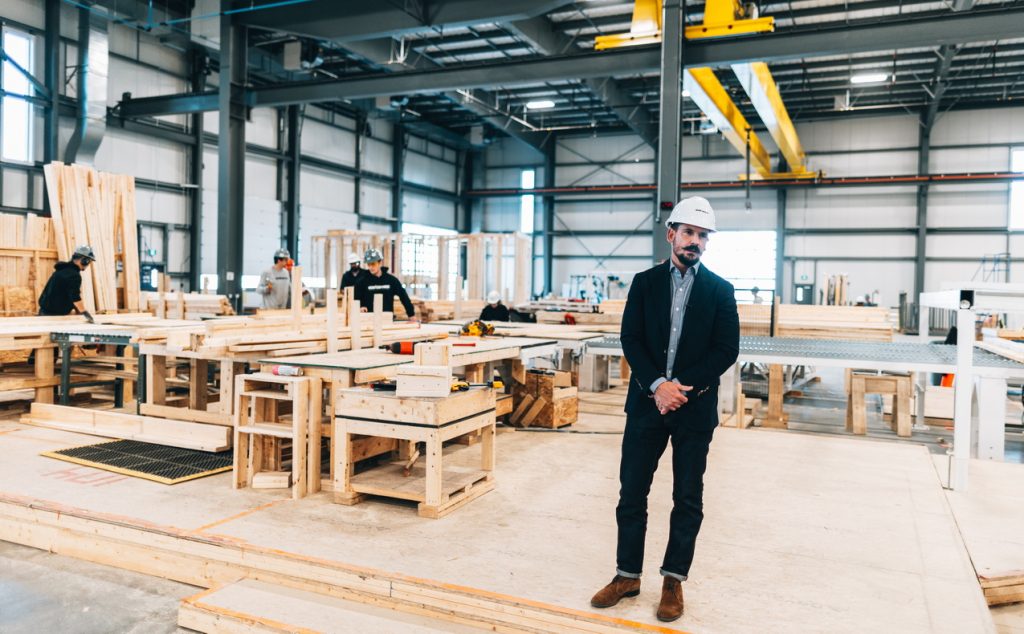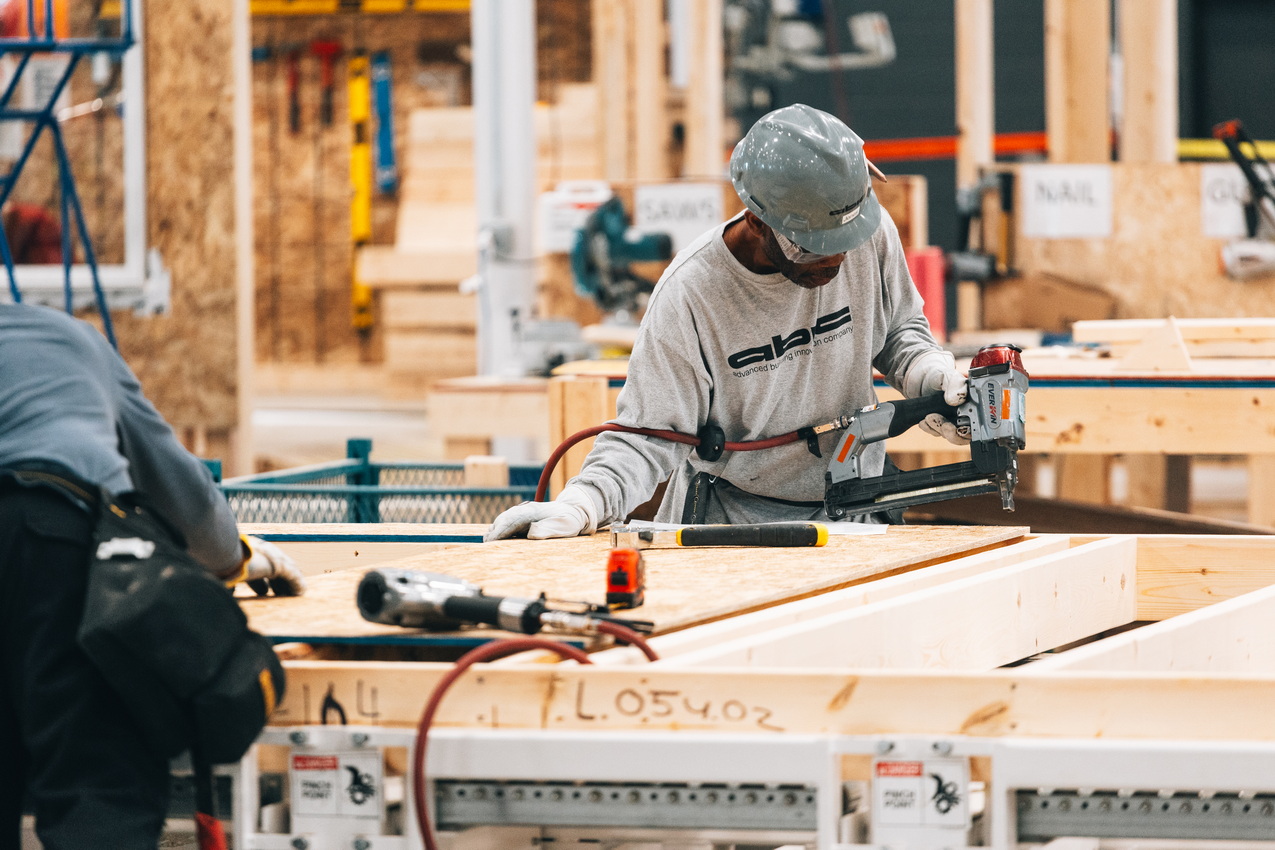“We’re at the precipice of something really, really bad.”
— Frank Cairo, co-founder & co-CEO Caivan, CEO ABIC
After several years of keeping things low key as it developed an innovative method of homebuilding, Ottawa-based developer Caivan and its sister manufacturing company, ABIC, are finally ready to lift the curtain and share the answers they’ve come up with to tackle the complex issues weighing on the housing industry.
The timing is deliberate as the city, along with the rest of the country, grapples with crushing problems that, at the very least, threaten to wipe out the dream of homeownership for a generation, and at worst could see us “slip into a Third World economic model” — a downward spiral that has Caivan co-founder and co-CEO Frank Cairo sounding the alarm bells.
“It’s a critical moment where if something magical doesn’t happen where we really do transform the way houses are built and how productivity in our space works, that we are going to end up in a cataclysmic environment for Ontario,” says Cairo, who is also CEO of ABIC (pronounced AY-bick). “We see our kids not having access to housing and we are now (on the) front line in neighbourhoods where people, who used to be buyers lined up to buy, can’t even find rental units anymore that they can afford.”
Access to housing and the ability to buy a home that can accrue value “is the single greatest prosperity generator we’ve benefited from,” he says. Take that away and we’re left with a very serious problem.
We’ve been hearing for some time now about the issues surrounding housing affordability and supply, with government attention and various policies aimed at fixing the problem, and substantial, if often fragmented, media coverage.
“We’ve been watching in this debate (and) nothing material changed, in fact it’s gotten worse,” says Cairo, who has been involved in home building and development for 23 years.
His response to the problem is two-fold.
To combat dogmatic thinking around land use planning, housing and city building, Cairo and his Caivan co-founder, Troy van Haastrecht, launched the Future Cities Institute with their alma mater, the University of Waterloo, in April, seeding it with a $10 million donation.
It was started, van Haastrecht said in an event marking the launch, “to upend entrenched ways of thinking with a better tomorrow in mind. The status quo isn’t working to drive prosperity in Ontario and Canada.”

At a tour of Caivan’s Barrhaven facility a month later, Cairo adds that the institute is “now mobilizing to really take a kick at an overhaul of the system in such a way that we can get back to what is exactly going on and, scientifically, how we fix it,” Cairo says. “The Future Cities group includes some of the greatest minds across fields like photonics and quantum nanoscience and applied mathematics and all the STEM researchers, (who) are all now digging in to get back to science in the realm of city building.”
First up from the institute is expected to be a tool launched by year’s end to help municipalities make better decisions around growth management.
The other part of Caivan’s solution is to utilize — and share — ABIC.
ABIC, which stands for Advanced Building Innovation Company, was created as an innovative manufacturing arm of Caivan, taking advantage of things like artificial intelligence, robotics and generative design to significantly speed up and improve home building. Much more than simply building a home shielded from the weather in a factory, ABIC uses its proprietary technology to create four to six homes a day (or more than 1,000 a year) for itself and its clients, using 40 workers in a 105,000-square-foot, waste-free factory that will soon be expanded.
The homes, which are delivered to the building site as components ranging from roofs and ceilings to walls with doors and windows included and framed rooms, are assembled in about 1.5 hours on site and then finished conventionally with siding and interior features.
Cairo describes ABIC as more of a technology company than a manufacturing one. “The objective was to infuse a lot of new approaches into the housing and land development space.”
Its suite of software was a dozen years in the making and emphasizes efficiency in terms of time, resources and sustainability and minimizes waste in land use, materials and its workforce. For example, he says, “we have tools now where we can upload a site survey and automatically generate full detailed designs, full layouts, full pro formas, full costing for that project in a matter of minutes, autonomously.”
While Cairo says it’s difficult to quantify directly how that results in savings on the cost of a home, he figures it would be an average of five per cent per house.
ABIC’s software team “is leading the charge on integrative and generative design,” he adds. “There’s no one else in the world doing what we are with generative design technologies for housing. Democratization of that toolkit is what the Future Cities Institute will be doing. We hope to take some of that technology and apply it to cities larger scale.”

For the ABIC facility itself, it has the ability to scale up construction substantially as soon as there is demand, and with scale comes cost reduction, which helps answer the affordability issue. Cairo doesn’t have specific figures at the moment, but allows that the company is “now building scale into our budgeting to generate efficiencies and to reduce our cost profile to give more to the customer for less.”
While he sees ABIC as a big part of the housing crisis solution, the problem is ensuring a reliable supply of lots ready to take its homes.
“Approved lot inventory is essential for even-flow factory delivery,” Cairo says. “Land development approvals, as they slow and they get patchy, really prevent our ability to generate scale with mass production solutions.”
One might argue that expanded development land is self-serving for Caivan and ABIC, but it’s also good for potential homeowners because of the economies of scale. Besides, Cairo is not necessarily arguing for new land to be added to the mix; it’s more about keeping an even supply of lots that are ready to build on in areas already approved for development.
Caivan’s research predicts some troubling numbers for the next year and a half in Ottawa. The supply of new homes has remained relatively stable in the past decade at less than 10,000 units, while demand began spiking in 2018 to create a large disconnect.
“We had equilibrium until about 2019 where supply and demand ran in sync,” he says. “We now have runaway demand without supply and it’s compounding each year so, by 2025, we expect 45,000 units short.”
This comes at a time when the province has a stated goal of building 1.5 million homes by 2031, 151,000 of which are supposed to come from Ottawa. So far, Ottawa has reached just nine per cent of its goal. “There’s no way” we’ll meet the target, Cairo says.
He adds that Caivan’s economic analysis for the next year and a half “means that we’re probably going to see a 12-15 per cent price increase in 2025.”
Already, Ottawa homebuyers with a household income of $115,000 are spending about 53 per cent of their income on mortgage expenses, he notes. “That’s why I’m sounding the alarms. This runaway affordability in this region, we’ll never be able to get it back if it’s lost … If we’re not careful, I think within the next five to 10 years we will have a crisis beyond which I don’t think the Western world has ever experienced in terms of lack of housing, lack of housing affordability.
“It is time for us to wake up, not only as a sector but also as a company to really drive — whether it’s comfortable or uncomfortable — the type of change required to get back on track,” for the benefit of future generations.






